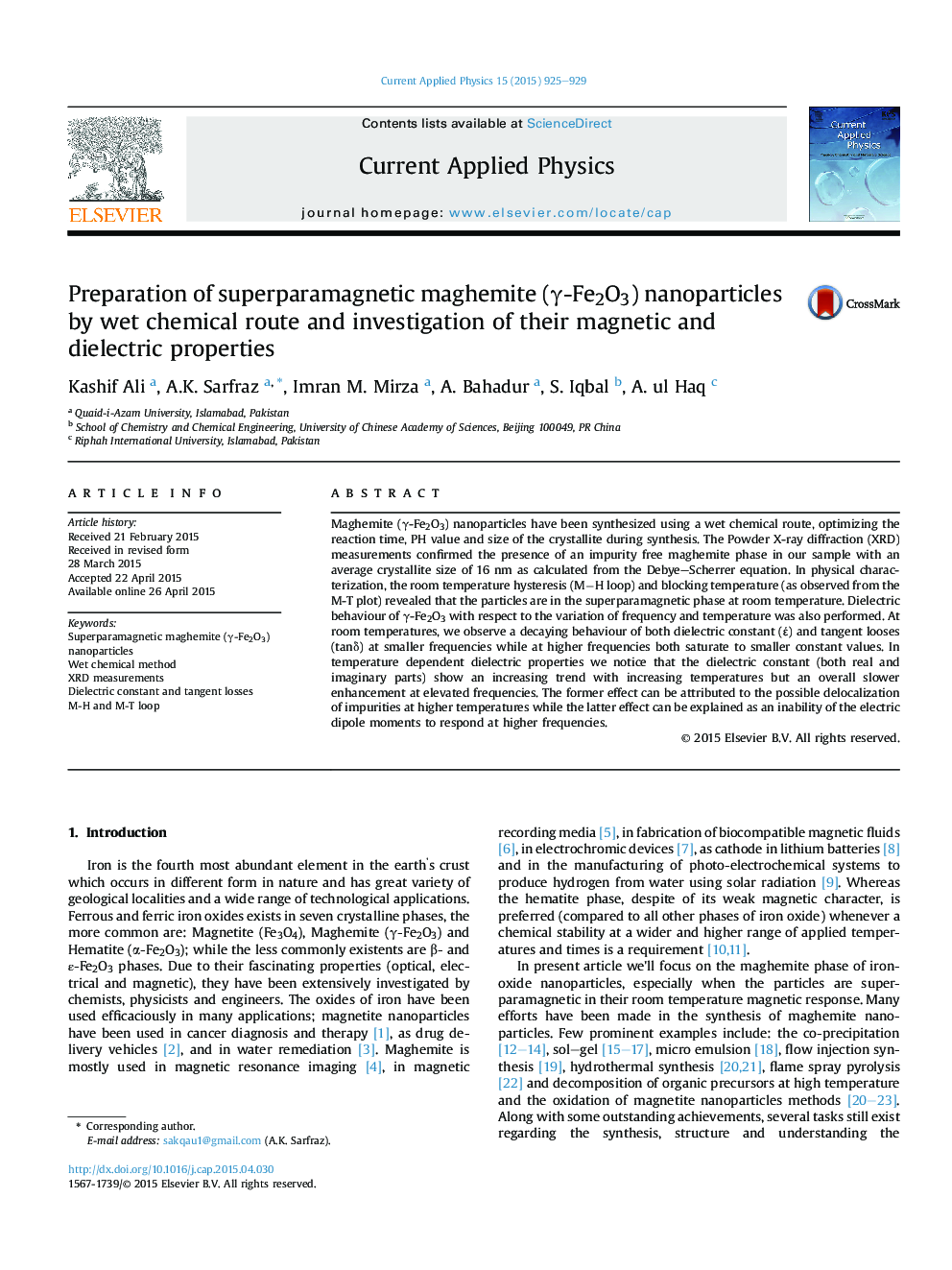| Article ID | Journal | Published Year | Pages | File Type |
|---|---|---|---|---|
| 1785609 | Current Applied Physics | 2015 | 5 Pages |
•Maghemite (γ-Fe2O3) nanoparticles were synthesized by wet chemical route.•Structure was confirmed through X-ray Diffraction (XRD) analysis.•The magnetic characterization was performed.•Dielectric behaviour of γ-Fe2O3 with respect to the variation of frequency and temperature was performed.
Maghemite (γ-Fe2O3) nanoparticles have been synthesized using a wet chemical route, optimizing the reaction time, PH value and size of the crystallite during synthesis. The Powder X-ray diffraction (XRD) measurements confirmed the presence of an impurity free maghemite phase in our sample with an average crystallite size of 16 nm as calculated from the Debye–Scherrer equation. In physical characterization, the room temperature hysteresis (M−H loop) and blocking temperature (as observed from the M-T plot) revealed that the particles are in the superparamagnetic phase at room temperature. Dielectric behaviour of γ-Fe2O3 with respect to the variation of frequency and temperature was also performed. At room temperatures, we observe a decaying behaviour of both dielectric constant (έέ) and tangent looses (tanδ) at smaller frequencies while at higher frequencies both saturate to smaller constant values. In temperature dependent dielectric properties we notice that the dielectric constant (both real and imaginary parts) show an increasing trend with increasing temperatures but an overall slower enhancement at elevated frequencies. The former effect can be attributed to the possible delocalization of impurities at higher temperatures while the latter effect can be explained as an inability of the electric dipole moments to respond at higher frequencies.
